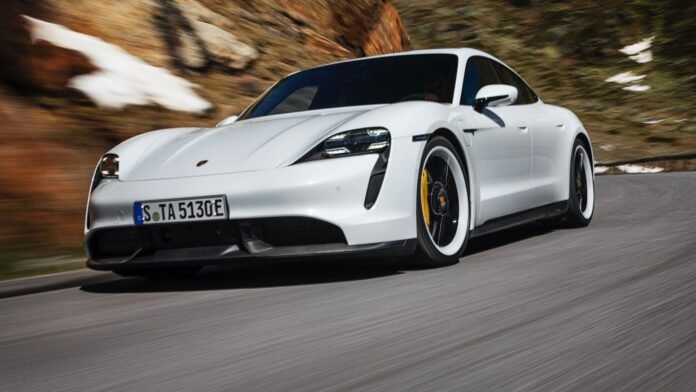If you bought a Porsche Taycan last year and you’re jealous of the new featuresin the 2021 model, fear not. Porsche has unveiled a free update for the 2020 Taycan that brings it up-to-date with things like improved driving dynamics, new intelligent charging functions and the latest navigation/infotainment features.
MORE FROM RAVZGADGET: Rivian Plans A Network Of 10K EV Chargers In North America By 2023
The update means that Porsche is roughly following Tesla’s path by improving older vehicles via software updates, though some key upgrades like Active Lane Keep Assist are paid.
To start with, the update unlocks new functions that gives drivers more options and control when it comes to charging. If you specify a charge you want when you arrive at your destination, Porsche’s app will inform you when you the battery has charged sufficiently to continue your journey and arrive at that level.
It also comes with the new “Battery-Saving Charging” function, letting you reduce charging capacity from higher levels (up to 270 kW) down to 200 kW in order to reduce temperatures and potential battery wear.

If you bought a Porsche Taycan last year and you’re jealous of the new features in the 2021 model, fear not. Porsche has unveiled a free update for the 2020 Taycan that brings it up-to-date with things like improved driving dynamics, new intelligent charging functions and the latest navigation/infotainment features.
The update means that Porsche is roughly following Tesla’s path by improving older vehicles via software updates, though some key upgrades like Active Lane Keep Assist are paid.
To start with, the update unlocks new functions that gives drivers more options and control when it comes to charging. If you specify a charge you want when you arrive at your destination, Porsche’s app will inform you when you the battery has charged sufficiently to continue your journey and arrive at that level.
MORE FROM RAVZGADGET: Kia Shows Off Its New EV6 Electric Car – See Pics
It also comes with the new “Battery-Saving Charging” function, letting you reduce charging capacity from higher levels (up to 270 kW) down to 200 kW in order to reduce temperatures and potential battery wear.
Follow @Ravzgadget on Twitter, Instagram, and like our page of Facebook.com/ravzgadget for the latest technology news.













